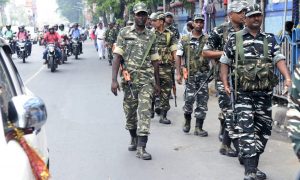Indian Space Research Organisation (ISRO) is developing a Radioisotope Thermoelectric Generator (RTG) to embark on a monumental journey of exploring remote and challenging environments of the deep space universe.
ISRO’s leading centre for the design and development of all satellites, UR Rao Satellite Centre (URSC) is in process of making a three-phased 100 Watt Radioisotope Thermoelectric Generator (RTG). The centre envisions the use of RTG technology for power generation and thermal management of ISRO’s deep space missions.
Further, ISRO plans to set up a space station, along with various missions in the pipeline such as the first Indian human space flight mission, Gaganyaan; the first Indian solar observatory, Aditya L-1; the second Indian space telescope XPoSat; Mangalyaan-2 to Mars; Chandrayaan-3 as a reattempt to land on the Moon; and the Venus orbiter mission Shukrayaan. The RTG technology will come in handy in these deep space missions.
What is Radioisotope Thermo-electric Generator (RTG)
Radioisotope Thermoelectric Generator (RTG) is a type of nuclear-powered battery that uses an array of thermocouples to convert the heat released by the decay of suitable radioactive material into electricity. The generators are governed by the “Seeback effect” and it generally has no movable parts. Seebeck effect is a phenomenon in which a temperature difference between two dissimilar electrical conductors or semiconductors produces an electromotive force (electricity). RTGs are highly reliable and maintenance-free because there are no moving parts in thermocouples, which reduces the chances of failure and wear out.
Understanding the imperativeness of RTG
To understand the working of RTG, let us know the working of a normal satellite first. The normal satellites are sent to space in various stages. In the initial stage, the satellite takes off with the strap on boosters followed by loosening of the boosters by the satellite in the second stage. In Indian satellites “Vikas Liquid Engine” is used in the second stage. The third stage is reached after detaching the second stage and finally, the satellite reaches into space. This is the modus operandi of a normal satellite.
In normal satellites, the use of heavy carriers for energy generation makes the satellites bulky, RTG systems, on the other hand, use thermocouples and natural decay of radioactive isotopes into electrical energy, which makes it less bulky. The RTG systems are more fuel-efficient than normal satellite systems as they are lighter than chemical rockets and thus, they can travel faster and further.
Notably, since RTGs do not work on solar power, they provide thrust to the satellite to function on the darker sides of the planets.
The genesis of RTG
RTGs’ journey can be traced to the time of Cold War in 1961, when the USA’s Transit-4A Mission used this technology for the first. The erstwhile Soviet Union had also launched the two dozen nuclear power space objects. However, budget constraints, the development of alternative sources of energy, and the possibility of escalation of the Cold War led to the curtailment of nuclear propulsion projects.






















 WhatsApp us
WhatsApp us
Pingback: รับซื้อ Notebook
Pingback: find out this here
Pingback: ข่าวบอล